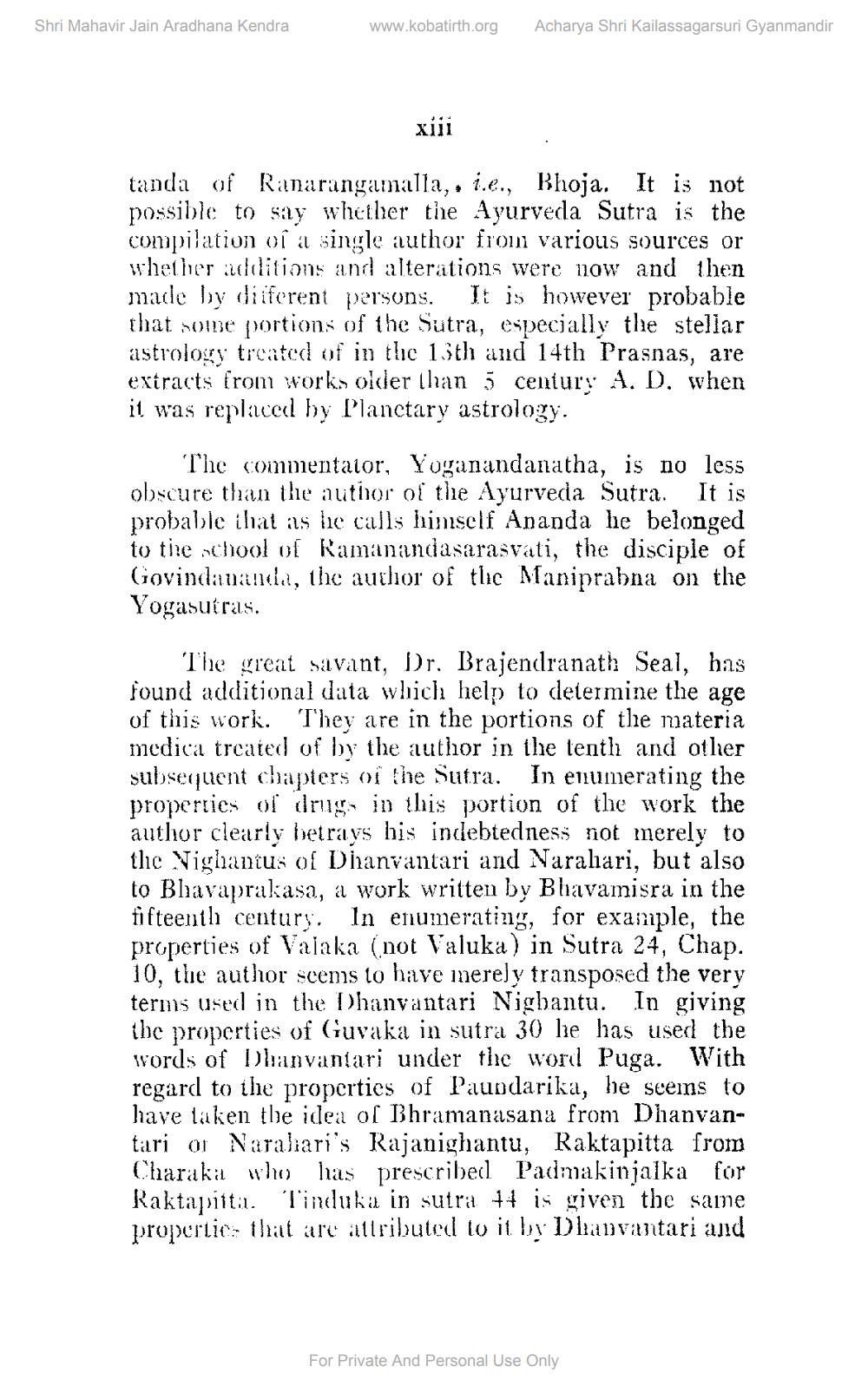________________
Shri Mahavir Jain Aradhana Kendra
www.kobatirth.org
Acharya Shri Kailassagarsuri Gyanmandir
xiii
tanda of Ranarangamalla,. i.e, Bhoja. It is not possible to say whether the Ayurveda Sutra is the compilation of a single author from various sources or whether additions and alterations were now and then made by diiferent persons. It is however probable that some portions of the Sutra, especially the stellar astrology treated of in the 15th and 14th Prasnas, are extracts from works older than 5 century A. D. when it was replaced by Planetary astrology.
The commentator, Yoganandanatha, is no less obscure than the author of the Ayurvedia Sutra. It is probable iliat ils le calls himself Ananda he belonged to the school of Ramanandasarasvati, the disciple of Govindanandı, the author of the Maniprabna on the Yogasutras.
The great savant, Dr. Brajendranath Seal, has found additional data which help to determine the age of this work. They are in the portions of the materia medica treated of by the author in the tenth and other subsequent chapters of the Sutra. In enumerating the properties of drugs in this portion of the work the author clearly betrays his indebtedness not merely to thic Vighanius of Dhanvantari and Naralari, but also to Bhavaprakasa, a work written by Bhavamisra in the fifteenth century. In enumerating, for example, the properties of Valaka (not Valuka) in Sutra 24, Chap. 10, the author seems to have merely transposed the very terms used in the Dhanvantari Nigbantu. In giving the properties of Guvaka in sutra 30 he has used the words of Dhanvantari under the word Puga. With regard to the properties of Paundarika, he seems to have taken the idea of Bhramanasana from Dhanvantari oi Naraliari's Rajanighantu, Raktapitta from Charakit who has prescribed Padmakinjalka for Raktapittal. Tinduka in sutra 4+ is given the same properlic: that are attributed to it by Dhanvantari and
For Private And Personal Use Only




